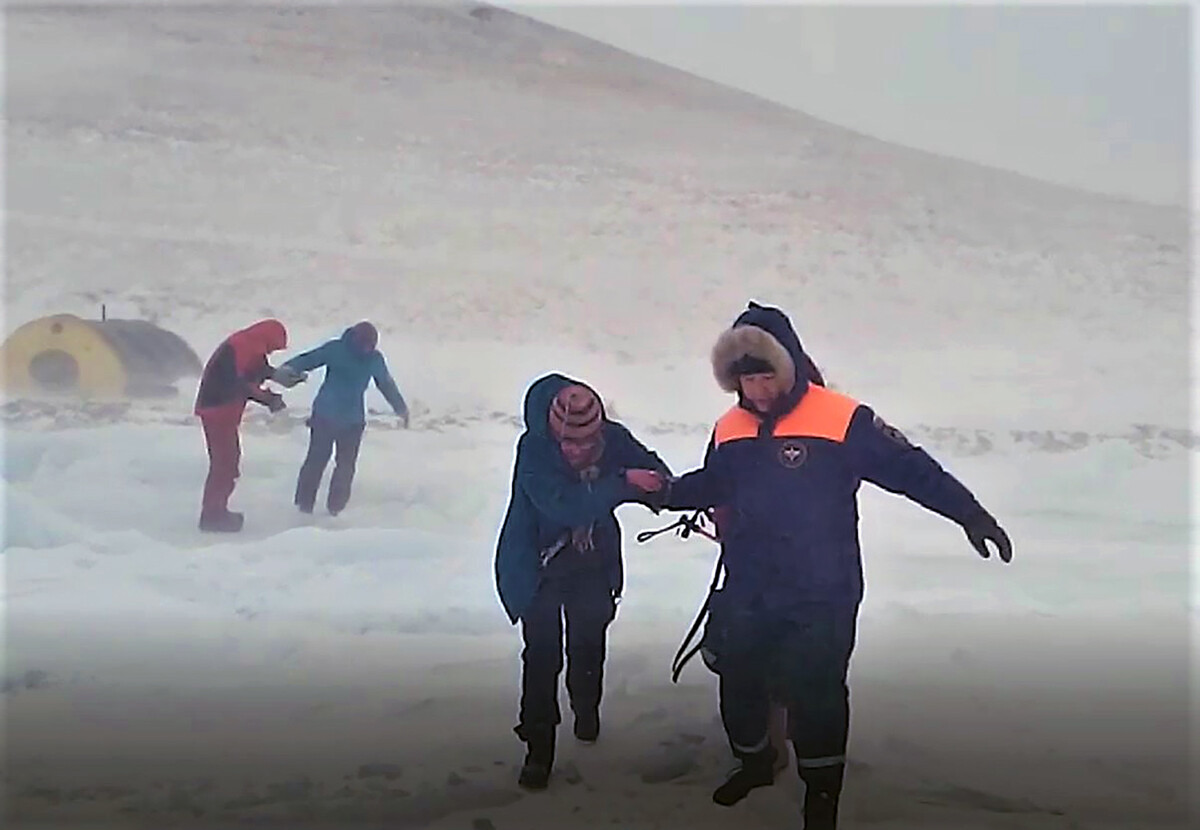
“You can’t go out at all, you’ll get a log to the head and that’s it.” This is what Ekaterina from Ulan Ude said about the Sarma, the killer wind of Lake Baikal. This is a fair description, given that Sarma’s gusts can reach 60 m/s, which is comparable to the ‘Sapsan’ train’s 215-230 km/h. It can rip trees clean out of the ground, break roofs off of buildings like sheets of paper and even sink ships!
The Sarma occurs when air streams collide with the Primorsky Ridge and, having overcome it, pick up incredible speeds on the way down, heading straight for Baikal.

The wind is most often encountered in the fall and in winter. During these seasons, the inhabitants of the hamlet of the same name as the wind, reinforce their roofs by attaching them to the ground with ropes. Their settlement lies directly in its path.
Buryats have an origin legend for the Sarma: it used to be a spirit that owned a magical box that, when opened, would cause the waters of the Baikal to come alive. The Barguzin and Kultuk winds fought for Sarma’s hand, but she refused, resulting in the ill-fated fiances’ decision to steal the box as revenge. However, the concealed box was discovered by the fisherman Olkhon, who returned it to Sarma and married her. Barguzin and Kultuk did not give up and declared war on Sarma and Olkhon. Instead of fanning the flames, Sarma proposed a different solution: if anyone could catch her, she would become their wife. With these words, Sarma transformed into wind, which effectively doomed any attempts.
Buryats believe that the Sarma begins to rage when the Baikal is being deprived of something very precious or when the lake is otherwise harmed - such as pollution. And that is no surprise: all peoples inhabiting the area around Baikal consider it both sacred and alive.
There’s around a two-three hour pause between the first signs and the first gusts. The Primorsky Ridge begins to be overrun with mushroom-looking clouds with strict contours - that means it’s time to get ready for the coming storm.
The final sign before all hell breaks loose is the so-called “opening of the gates” - a thin sliver of light between the mountain peaks: the Sarma usually strikes 15-30 minutes later. So, if you do decide on visiting Baikal - remember about these early warning signs and take special care. It’s best to travel there during the summer, when the climate is most favorable.
In a single word - very. It’s true, the locals have gotten used to nature’s extreme mood swings - however, for the uninitiated, an encounter with the fierce Sarma could end in tragedy. This happened on plenty of occasions throughout Lake Baikal’s history.
The most devastating tragedy to ever take place happened on the night of 14-15 October, 1901. The Sarma sank the ‘Yakov’ steamer, which was hauling three other ones. The wind took the vessels down, killing all 178 on board: some died due to the sheer force of the wind striking the hull; others, from freezing to death in the Baikal waters.

More similar incidents occurred over the several years following the tragedy - and those are just the major ones: many fishermen in the 17th-18th centuries likewise fell victim to the Sarma, suddenly finding their boats too far out, with no time to reach shore before the winds struck, killing them.
Today, such events aren’t too frequent, however. “Experience has taught people that Baikal is best avoided when Sarma strikes”, Ekaterina adds. “It’s true, of course, we were in deep trouble when we ended up in the midst of a Sarma event!”
If using any of Russia Beyond's content, partly or in full, always provide an active hyperlink to the original material.
Subscribe
to our newsletter!
Get the week's best stories straight to your inbox